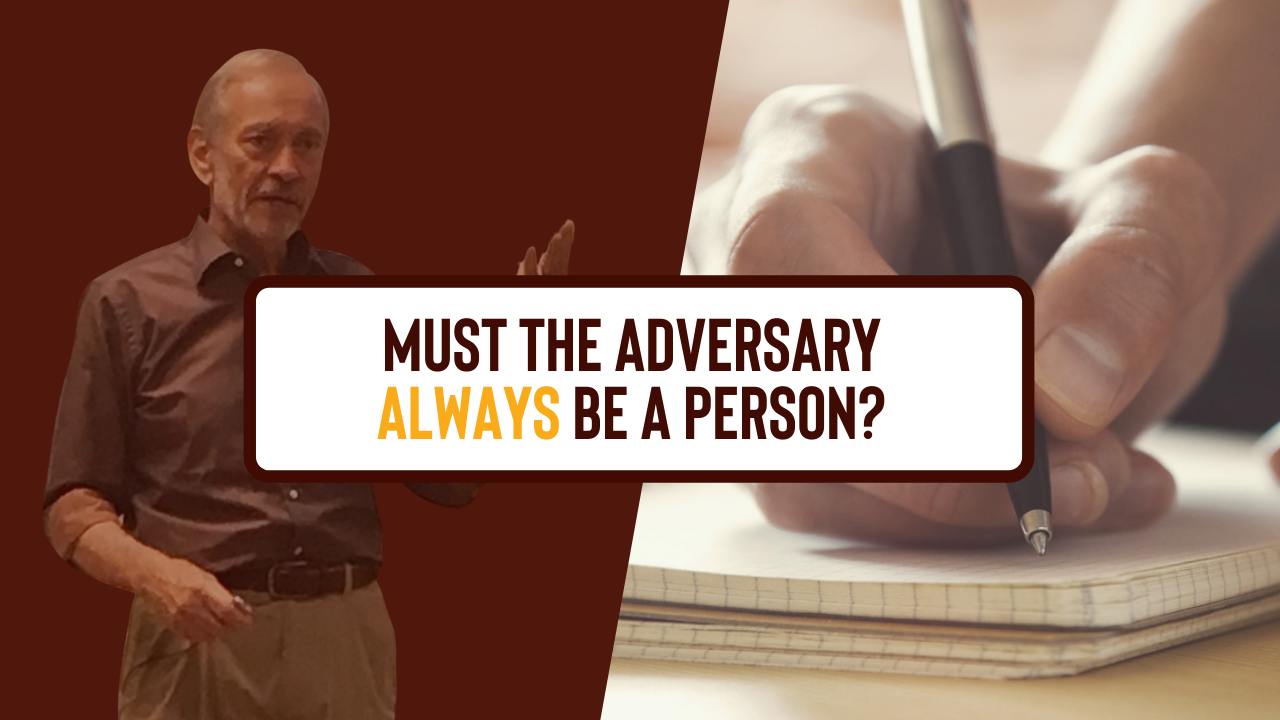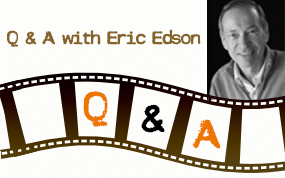MUST THE ADVERSARY ALWAYS BE A PERSON?
QUESTION:
From José V., Las Condes, Chile:
“Professor Edson, you say the Adversary needs to be a person. But I’ve read that a lack or need within the Hero or the community can work, too. Is this true?”
Hi José,
Good question about an essential story element – the Adversary.
Yes, there are films that use a generalized need within the Hero – or a social need within a community – to provide the story’s central dramatic conflict without a human Adversary. These movies often are looking to make people THINK more than FEEL.
But the screen examples I use in my classes most frequently come from commercial, mainstream Hollywood movies that made a ton of money.
That’s because financial success is a crystal clear indicator of just how EMOTIONALLY INVOLVING a movie was for audiences.
People only flock to a film if it delivers the experience of feeling deeply. That’s what professional screenwriters work so hard to do – create powerful emotional journeys.
Social issues and themes can be conveyed in commercial films, too, but those issues become a whole lot more impactful when we offer them through each moviegoer’s emotional connection to the Hero.
So I maintain when the conflict in a story is built around a general social issue, or some personal lack or need only found within the Hero – and no human Adversary is present – it’s missing something very important. BECAUSE EVERY FORM OF CONFLICT IN A MOVIE WORKS BEST WHEN THE CENTRAL ISSUE GETS PERSONIFIED as a single, powerful Adversary character who works hard to keep the Hero from reaching his or her goal.
Here’s an example.
The movie “HIDDEN FIGURES” tells the story of three black female friends in the early 1960’s who get jobs in Florida at the National Aeronautics and Space Administration as “Human Computers” helping to launch astronaut John Glenn into space. This extraordinary true story unfolds during a historical time and place where both racism and sexism hang over these brilliant women like a thick, caustic fog. Even at NASA, Katherine Johnson (Taraji P. Henson), the Hero of this story, faces rejection and humiliation every day… in spite of the fact she happens to be a world-class math genius!
The NASA department she works for sure has some social “lacks” all right. A lack of justice, equality, and basic human kindness.
But in this story, a powerful dramatic tool is used to thrust Katherine’s emotional experience of relentless racism deep into the hearts of moviegoers.
It’s her HUMAN ADVERSARY, Katherine’s boss, Department Supervisor Paul Stafford (Jim Parsons) who serves as racism personified in a single, flesh-and-blood opponent.
Stafford steals credit for Katherine’s great work, dismisses her every request for professional recognition, and makes Katherine run a half-mile each way to use the only “COLORED” restroom at NASA. Stafford even stops the Hero from simply getting a cup of coffee at the department break table when he puts there a small, broken, beat up tin teapot with the sign “COLORED” on it. And right beside it sits a large, shiny new ever-full coffee maker reserved for use ONLY by employees who are WHITE.
Watching Stafford constantly belittle the Hero gets us re-e-eally ticked off. The audience experiences every scorching racist putdown along with Katherine.
It’s the personification of all racism in a single Adversary character, Paul Stafford, that makes Katherine’s struggle against what’s socially wrong in her community become VISIBLE, SPECIFIC, and EMOTIONALLY VIVID. It focuses every moviegoer on one single grueling human conflict between two people.
Now we are glued to our seats!
In any story, along with the physical plot of Hero-versus-Adversary, you can ALSO STILL EXPLORE the inner personal lack or need of your Hero in the form of a simultaneous Character Growth Arc. NOTHING IS LOST BY PERSONNIFYING THE ADVERSARY – AND A WHOLE LOT IS GAINED!
Thanks for your question, José.
Write ever onward.
Eric Edson




Hello from Italy.
I’m reading this fantastic book and this same question popped up. What a helpful tool this blog!
Following the technique of professor Edison, I find myself stuck with the concept of an enemy as a person and not a physical thing. In my story, the hero has all the characteristics that she should have to be interesting, but she has an addiction to drugs. For example, in the series Euphoria, one of the most-watched series of this year, I think the adversary is the drugs, after all. I would also use that as an adversary to make the character struggle the most to achieve her goal.
Should I dig deeper into my creativity and try to find a personification of the adversary? Such as, for example, a narcissistic friend who doesn’t want her to become a better version of herself and does everything to make her retake drugs?
Although, I fear falling into the tricky space of cliches!
Thank you in advance for any type of response
A drug pusher might be a good place to start looking for an adversary – someone who pretends to be the hero’s friend but want to keep the hero hooked so they can continue the cash stream.